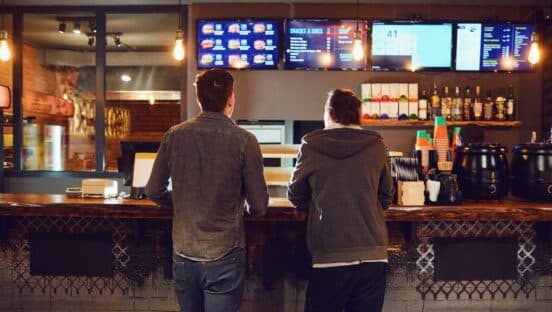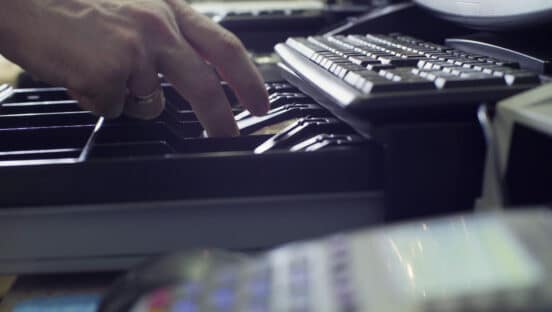Sponsored by ZIVELO.
It wasn’t that long ago restaurant leaders wondered if consumers would use kiosks and if they did, whether it would harm guest service. Today, however, kiosks are so ubiquitous the questions being asked are no longer if the technology could be applied to restaurants, but how it can be implemented most effectively.
“Think about the last time you went on a trip, you went to the gas station and paid at the pump,” says Healey Cypher, CEO of ZIVELO, a company that has helped numerous restaurants install ordering kiosks. “At the airport, you checked your bag at a self-service kiosk. On the plane you watched a show or a movie on a self-service screen on the back of the seat in front of you.”
The concept is proven, and consumers are increasingly choosing to patronize restaurants that offer effective self-service platforms, resulting in increased sales and loyalty. In fact, kiosks are so effective some ZIVELO’s partner companies have experienced up to 30-percent ticket lifts after installation, but the strongest results came from companies that embraced strong rollout strategies.
Because ZIVELO has helped so many companies launch kiosk programs, the team has learned what makes an installation successful and guides its partners through the process. Cypher says simply deploying without a strategy can create challenges for a restaurant.
“We’ve shipped tens of thousands of kiosks and have gathered lots of lessons,” he says. “There’s a lot of nuance to urban versus suburban environments or the languages spoken in a community. If you don’t have a conscious strategy for deployment, you fall into a lot of traps.”
Hardware, for example, is one area where many restaurants make mistakes, says Kris Bartel, chief business development officer for ZIVELO. “You can’t just put an iPad-sized screen on the counter and hope it works,” he says. “We’ve found that you need a fully immersive experience provided by a 27—32-inch screen so that customers feel like they can spend time customizing their orders.”
When customers are immersed, they are more likely to consider add-on items, like cookies. “Even if your cookie is only $0.99, if your average ticket is $5, you’ve immediately earned a 20 percent lift,” Bartel says. “Kiosks also never fail to ask a guest if they want a drink, so you can make an extra $1.59 on a high-margin item.”
Placement is another important factor. “You want the kiosk to be a disrupter—almost right in the way when a customer comes in to stop the guest from going to the counter,” Bartel says. “You don’t want to put it in a corner or down a hallway near the bathrooms.”
Scheduling is also a major consideration. When deployed correctly, restaurants see increases in orders for add-on items, like fries, and the kitchen must be prepared to handle increased volume. Additionally, Bartel says it can help to schedule an employee ambassador to invite guests to use kiosks and show customers how to use them for the first few weeks.
Of course, no deployment can be successful without measuring its impact on the business, so the Zivelo team recommends deciding which metrics are important to the brand in advance. Cypher says looking at simple but important metrics, like traffic and sales, can give many insights, but brands should include more complex measurements, like productivity, basket mix, and guest and employee experience, too.
“Collectively, restaurants find that customers love the experience of the kiosks and get to order things at their pace,” Cypher says. “But associates love them, too. It changes their role into a heightened customer service person instead of requiring them to just take orders.”
Finally, installation, maintenance, and financing are also major factors. Though each restaurant is different and will require its own plan, partnering with a team that knows the industry and has experience with large-scale kiosk rollouts can ensure a smooth transition.
“This is a major change in the industry,” Bartel says. “It’s clearly going to continue. Look at where airlines were when they started and where they are today. We see the same things happening in restaurants. A few years from now, the restaurant space is going to look completely different from what it is today.”
By Peggy Carouthers













